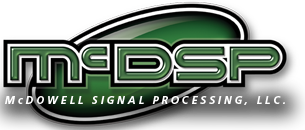Los Angeles based music and scoring mixer, engineer and producer, Noah Snyder has worked on numerous hit films, video games and albums over the last dozen years. His credits on the big screen include mixing, engineering and digital recording for feature films such as Nailed, Men In Black III, New Years Eve, This Means War, Alice In Wonderland, Date Night, Green Lantern, and 50 First Dates, to name just a few. Video game credits feature mixing Dragon Age: Origins, Thor, Dragon Age II, Rift and Lord of the Rings: War in the North. Additionally, Noah’s album credits include multiple duties on Warren Zevon’s 5-time Grammy Award nominated The Wind as well as work with Danny Elfman and Don Henley. In a one on one interview with McDSP, Snyder says, “What makes my job ultimately so exciting is helping genius artists and composers achieve exactly what they want,” of course with the use of McDSP plug-ins along the way.
As you can see from Snyder’s credits, he’s well versed in many different genres of the audio and music industry. What makes Snyder the perfect guy for these gigs? He says, “I’ve worked with a lot of great mixers and more than one of them has said to me, ‘you have to know what something should sound like before you hear it.’ You have to know instantaneously – no this isn’t what I want it to sound like, it needs to sound like this, and be able to make those changes. So in working on film mixes, games or songs if I know that something is there sonically that isn’t the way I want it to be, I need to have the ability to hear it, feel it, and fix it.”
Two of Snyder’s go-to plug-ins are McDSP’s FilterBank and Analog Channel. “FilterBank is usually all over the place, on guitars, bass, and drums of course. I use it in Pro Tools, Performer and Logic. The fact that it’s Audio Unit supported means that I get that much more use out of it.” McDSP’s latest v5 release has added the use of Audio Unit support, which allows usage in Logic, Digital Performer, Ableton Live and other Audio Unit compatible DAWs. “I use FilterBank all the time, it’s really a go-to and Analog Channel is a close second.”
McDSP’s Analog Channel has been around almost since the beginning of McDSP, emulating the sounds of high-end analog tape machines, tape and channel amplifiers. In 2010 Analog Channel v5 added a new GUI and additional tweaks and features. “I love the changes to Analog Channel v5. I use it all over my mixes it’s just something that glues everything together.” In taking a closer look at one of Snyder’s actual mixes he shows McDSP exactly how he’s using Analog Channel to get the most out of his mix. “What it’s doing is really tightening up the low end for me, making it speak nicely on small speakers. It takes the edge off a little bit of the highs, pulling it together in a nice way, nothing too radical but it does exactly what I want.”
“I’ve been using digital audio workstations from the beginning, that’s part of how I slipped into this world so easily, because I came into it during a time of change. McDSP was there when I came in, and it’s been something I have used as my personal workhorse since the very beginning. It’s become part of my digital audio experience – I get what I need out of it and what I want and I’m sure that everyone else using them has a similar experience. You don’t have to be an engineer genius to start having fun with them, it’s hard to go wrong.”
Article Source: http://mcdsp.com/2013/08/06/noah-snyder-2/
